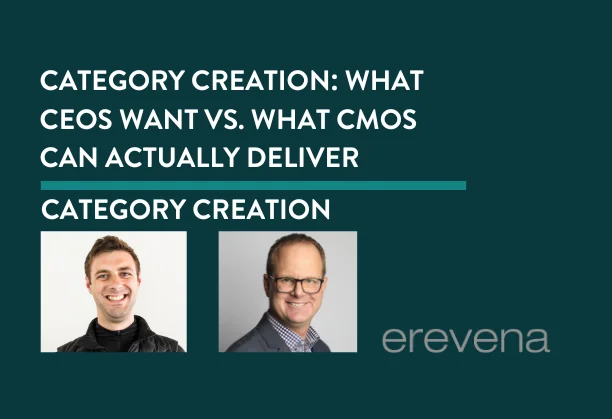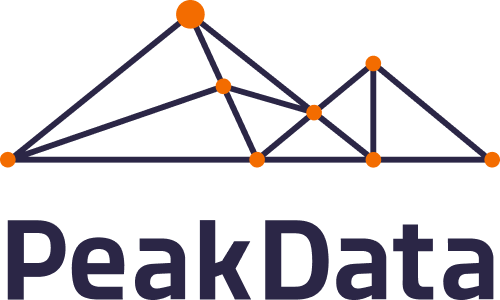Ivan Wicksteed, a global marketing leader and entrepreneur, talks to Erevena’s Flo Bown about his career journey from strategist to brand marketer to growth marketer and now business founder – and why new generation tech has the power to unlock value for millions more customers.
What’s your background in marketing?
I’m a big believer in what Steve Jobs said years ago, which was that you can’t really join the dots forward. I started life as a strategist, which is a very left brain, analytical activity where you’re balancing short- and long-term problems in your brain at the same time. I found it interesting but ultimately confining, which is when I moved on. I then became a marketer and a CMO on the brand side for Fortune 100 companies: Coca-Cola, Nike and Old Navy.
What is it about start-ups that then attracted you?
I was living in San Francisco in 2015 where I was getting sucked into the world of start-ups. I got addicted to it. It’s not just the speed of decision making that happens at high-growth companies, it’s also the type of that decision making. While it could be marketing related, more often than not it’s a customer pain point, a pricing decision or a product decision and I like to get involved in those conversations.
One of the startups you joined was GoHenry – was that a success story?
Yes! I was CMO at GoHenry until July 2023 when we sold the company to Acorns in the US. It was a good outcome for us and most of the exec team, myself included, moved on to other things.
What do you look for when you’re approached by companies?
My approach to evaluating opportunities hasn’t changed that much over the years. First, I want to know the size of the prize. There are all sorts of problems that need solving, I like the big ones. So, for that reason, I’ve been attracted to industries like FinTech, finance, or health insurance.
Second, I like to see what the NPS (net promoter score) looks like – what are the points of friction, how broken is the customer experience and why does it need fixing? If it’s a big industry and it’s working fine, then that’s not particularly interesting as a marketer, but if it’s a big industry that’s broken, then it becomes interesting.
Third, I look at the strength of the offering. And I include the leadership team in that as well as the product. I want to know how much of a moat they have around them and how sustainable it is.
Has anything changed in your due diligence over time?
One thing I do a lot more than I used to is kicking the tyres on the unit economics and profitability. In fact, I wish I’d done more of it early in my career. I look at the valuation to see what the company is worth, as well as what it should be worth based on the current unit economics. It’s easy to be bowled over by the charisma of a founder but if the company is paying too much to acquire customers it’s going to run into problems.
How do founders react when you come in with questions about unit economics?
If a founder reacts badly or is unwilling to talk openly about costs of acquisition, lifetime value and such like, that would be a warning sign for me. If it’s a good business with good payback and customer retention, they should be willing to share that information. If they’re reticent, it might be for good reason.
What advice would you give a founder looking to bring in a senior marketing leader?
Think carefully about what you call the role, firstly! Chief marketing officer is an overused and misused phrase. Do you mean Chief Experience Officer? Or Chief Growth Officer? Do you mean Chief Revenue Officer? Or Chief Brand Officer? Once you call the job by the right name, you’ll get the right candidates. I would also recommend really defining the lines of accountability, so that everyone knows what they’re responsible for.
Can you expand on this subject of accountability?
Chief Marketing Officers often share swim lanes with other functions, such as product, sales, or customer experience. And while it’s great to have collaboration between the teams, at the end of the day somebody has to be held accountable. As an example, take customer acquisition costs (CAC). It is difficult to be held accountable for CAC if you only control some of the inputs, such as the acquisition portion, or the brand portion. If you don’t control the funnel or the early onboarding experience, you might be doing a pretty good job of pushing customers to the website, but then find that the website is failing. Or you may be getting customers though the website, but then the funnel fails. Or perhaps the early month-books or sign-up experience are failing. You can’t actually be held accountable for CAC if you don’t have responsibility for those things.
Have you seen a change in the marketing skillsets needed over time?
We’ve come out of a period where there was a lot of VC money floating around, with a premium on growth at all costs. The type of marketers being favoured were those who could drive hyper growth. We weren’t seeing a lot of focus on customer quality, or retention, or lifetime value. That chapter is definitively over, luckily.
For the past two or three years I’ve seen a shift towards things like conversion rate optimisation and funnel improvement, where small incremental changes to a website or funnel can have outsized implications playing around with variables that don’t involve spending money is something I’ve spent a lot of my time on in the last couple of years – it’s been less about spending lots of money and more about how we can improve the efficiency of what happens once you’ve got people to the website or app store.
What new approaches have you seen being adopted?
I’ve seen a lot more scrutiny and science around the ratio between CAC and lifetime value. A customer acquired in one channel isn’t worth the same as a customer acquired in another channel: one customer might be worth $50 and another might be worth $200. How do you stay on top of that? They might need different messaging. They might need a different channel mix or different retention strategies. So, I’ve seen a lot of energy shifted towards putting predictive models in place to lifetime customer value.
What is the best way to measure the impact of a marketing leader in a high growth company?
The answer in the previous business cycle would have been the company’s top line results – it’s growth.
I believe the enduring legacy of a leader is the team they leave behind. So, you try and hire people who are smarter than you. You empower them to do good work and then, ultimately, your job is to make yourself redundant to some extent. If you hire people who know what they’re doing, have a clear mission, KPIs and budget, then you should be able to step back and let that team perform. I like to look back at the team I started with and compare that to the team that I left behind. Is it stronger? Are they more capable? If the answer is yes, then that’s your legacy.
What impact is technology having on marketers and businesses?
We’re living through a period of seismic change. What’s happened specifically since the launch of GPT 3 and 3.5 feels like the tectonic plates are shifting underneath our feet. It’s calling into question not just what marketers do, but also what businesses do and how businesses are built. The biggest implication of what’s happening right now is the speed and cost with which companies are coming to market. It’s now possible to conceive of, build and launch a company within weeks or months, whereas previously it would have taken years and been very capital intensive.
You describe it as a seismic shift – can you expand on that?
Yes, what we’re experiencing right now is as big as, if not bigger than, the first rush to build websites back in 1999, 2000 and 2001. There are three big leaps forwards here. The first is text, with GPT model. Then there’s image, with the likes of Dalle or Midjourney. Lastly, you have voice solutions such as Whisper and ElevenLabs. LLMs (large language models) were developed as a conversational model but have surprised everybody, even those who developed them. That’s because in the course of studying language, they developed reasoning skills. GPT helps you achieve tasks not just because it understands the language but because it is able to reason and pull in various different tools as needed.
That’s text, what about image and voice?
The image AI models are calling into question things like photoshoots – do you really need them anymore? Do I need to pay a graphic designer to create a logo when I can have 50 different variants spun up? And what about video shoots – are they good use of money or can we just automate the process? So, while everything that’s happening around image and video creation is super exciting, it’s also calling into question everything that’s been accepted until now. With voice, there’s a huge unlock of different avenues and corridors ahead. I think voice is capable of what happened when GUI (graphic user interface) was first introduced: it brought in a whole cohort of people who’d been left out because they couldn’t code. Voice is capable of doing that for a whole new cohort, bringing in new customers who have been left out.
Where is this new tech being used today?
A lot is being applied to improve productivity – helping to create websites faster, for example. Also process automation, such as billing, is another growth area. And then there is customer experience, with chatbots, assistants and companions finally having their day. The last area of growth is around building creative content. I don’t think anyone would have predicted that these models are really good at developing iterative creative content.
What are you doing personally with AI?
We’re in the early stages of creating a new AI venture so I can’t talk too much about it! But watch this space: we launch in Q2 2024!
Ivan Wicksteed is the Founder & CEO of Eve, a virtual companion aimed at seniors and those who live alone (www.IamEve.ai).
Share this article:













